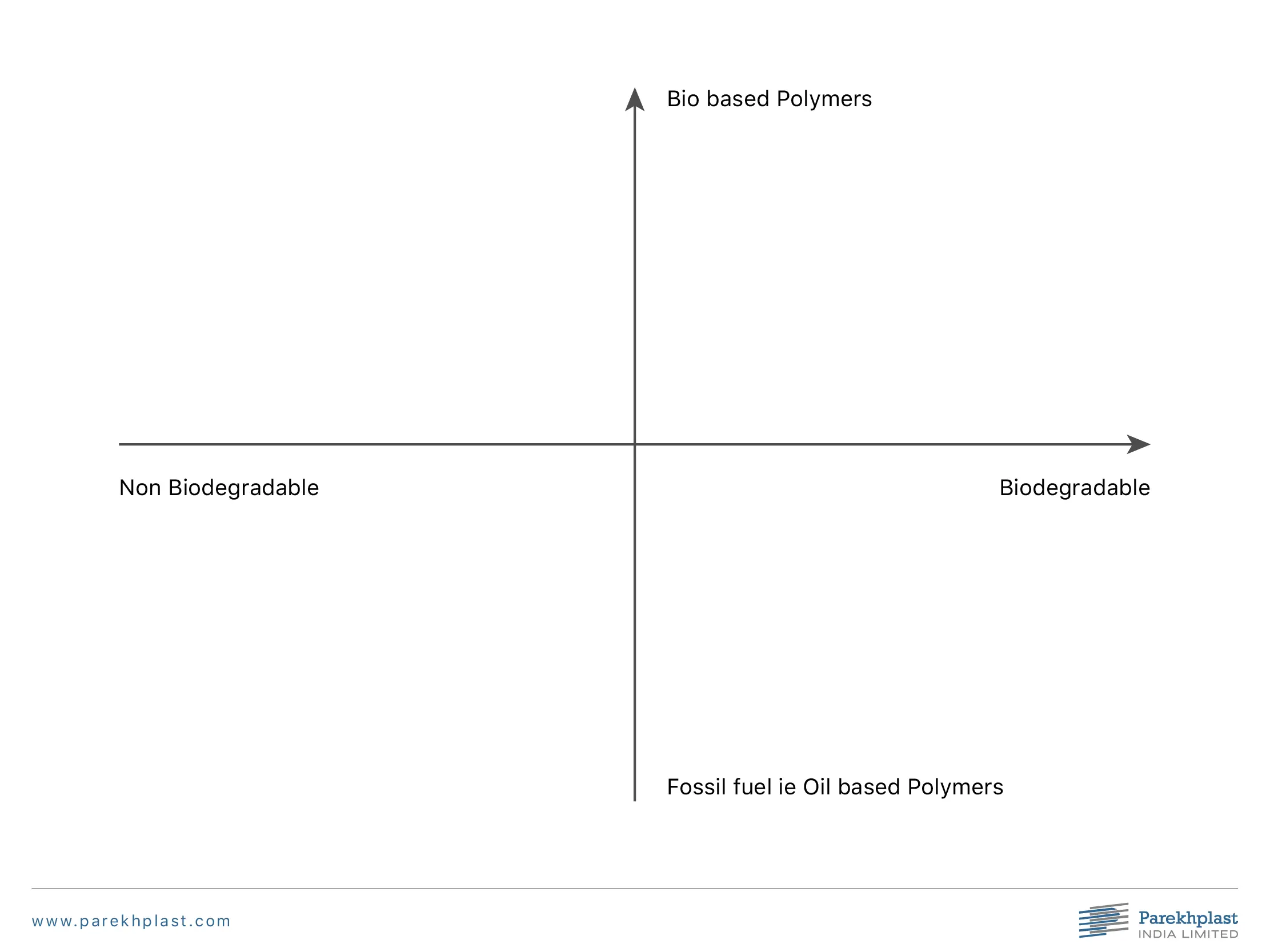

There is a lot of interest in Bioplastics, which are expected to be the new family of materials which will help the world of plastics. Some of these materials are already being used in the industry and many trials are also going on. So what exactly are these materials. Here is a Q&A on the same from a manufacturer’s point of view :
Q : What exactly are Bioplastics and how are they different from the regular plastic polymers ?
A : Usually the plastic raw materials are made from Crude Oil derivatives. Such petroleum based polymers are therefore fossil fuel based.
Bioplastics refers to the family of plastic materials which are either Biobased or Biodegradable or they have properties of both
Biobased : This means that the material is (partly) derived from biomass or plants ie which are renewable sources. Biomass for plastics are usually from corn, sugarcane, or cellulose. Therefore this is not fossil fuel based, hence it is also called as Green material.
Biodegradable : Micro-organisms in the environment are able to convert biodegradable materials to natural substances such as water, CO2, and compost without additives within a certain time and at a particular location.
Q: So what is the method of classification of regular plastics and Bioplastics ?
A: European Bioplastics Association has classified these on the basis of the following two axes : as shown below in fig1 :
Whether the material is fossil-fuel based or bio-based
And whether it is bio-degradable or not

Q: What are the examples of classification of Bioplastics ?
A: Any classification on the above two axes leads to the following four quadrants (have a look at fig-2) :
Conventional Plastics : These are fossil fuel based and non-biodegradable like Polyethylene (PE), Polypropylene (PP), PolyEthylene Terephthalate (PET), Polystyrene (PS), Acrylonitrile Butadiene Styrene (ABS) etc. Bio Plastics which bio-based and non-biodegradable : Eg Bio-PE (which are made of regular PE and plant based PE, mixed in a proportion eg 70/30), also called as Green- PE. Braskem from Brazil has innovated and offers their I’m Green ™ PolyEthylene product which is a plastic produced from renewable resource like Sugarcane, which can be regenerated over a short period of time. It also helps conserve fossil fuels and reduce green house gas emission.Another example is Bio-PET. Now we know, that PET is a 70/30 blend of PTA and MEG. In Bio PET, the petroleum based MEG is usually replaced with bio-MEG (sourced from molasses, hay or baggase)
Bio based And Bio Degradable : These are usually materials made from cellulose acetate (plant based) or lactic acid based blends (or pure starch blends) and are used for primarily single use plastics like cutlery or some applications across pens / toys etc. Some examples are :
They are completely biodegradable as per the standards specified under ASTMD6400 / EN13432

Oil-Based and Bio-degradable : Traditional oil based polymers which are biodegradable have existed for many years and usually being used for invivo applications such as stents, tissue engineering and other biomaterial applications. Examples include PBS and PCL
Q: So, that is a great classification system. Which new biobased materials are being used most frequently in the industry ? Are they costly to use ?
A: The materials in the second quadrant (ie Biobased and non-biodegradable) are being trialled and used by many companies and manufacturers across the world. This is because they can be made just like regular materials, but are simply sourced from Cane instead of Crude Oil. They can also be processed on existing machines and processing systems.
Further, they are recyclable and reusable alongwith other regular fossil fuel based polymers and thus mesh in well with the circular economy.
In fact the Bio-PE can be useful for HDPE / LDPE / LLDPE in extrusion, film and injection grades, thus increasing their usability across many applications. The costs however are currently 2- 2.5X of the regular oil based polymers (* as in FY20)
Similarly the materials in Quadrant 3 (ie bio-based and bio degradable) are being used in single used applications as mentioned earlier.
However they cannot be used with existing systems and processing systems. Hence the machines and moulds using such materials are to be modified for this purpose.
Usage in FMCG applications is low as of now primarily because of poor barrier properties. It has poor MVTR (Moisture Vapour Transmission Rate) which would lead to drying up of the product packed internally within the packaging.
The costs currently (* in FY20) are almost 3 – 3.5X of regular oil based polymers.